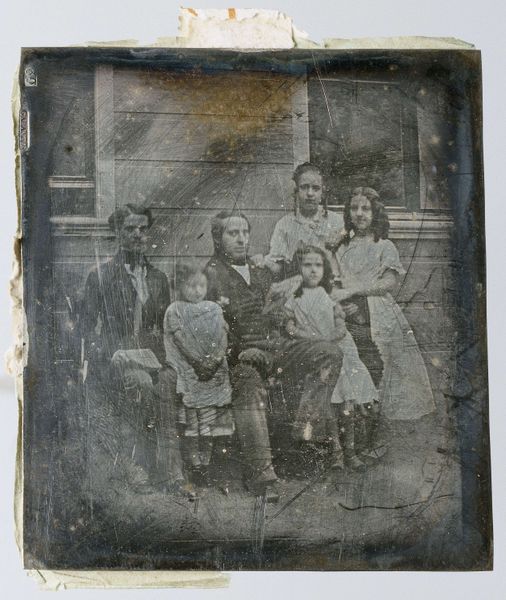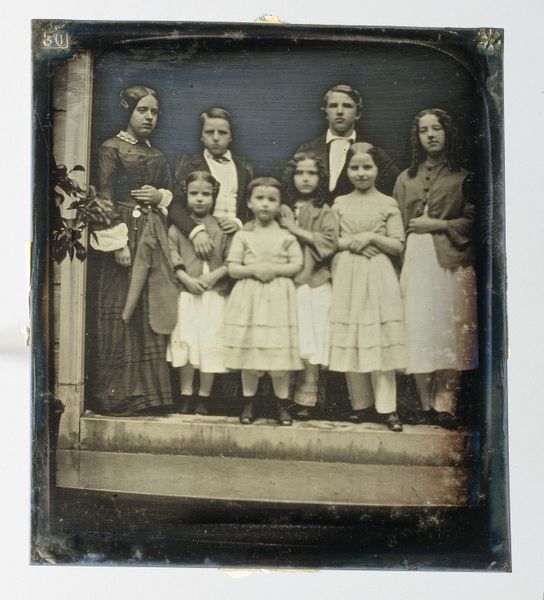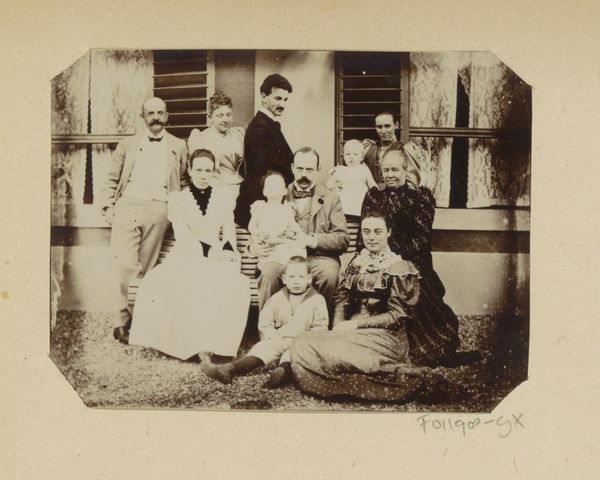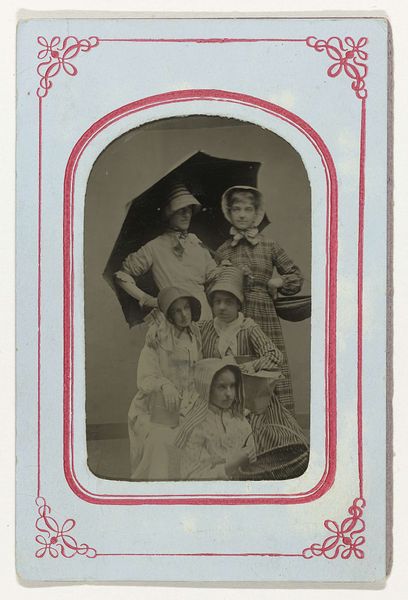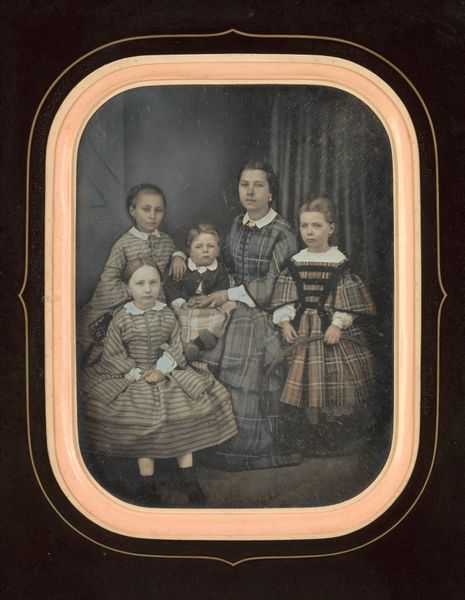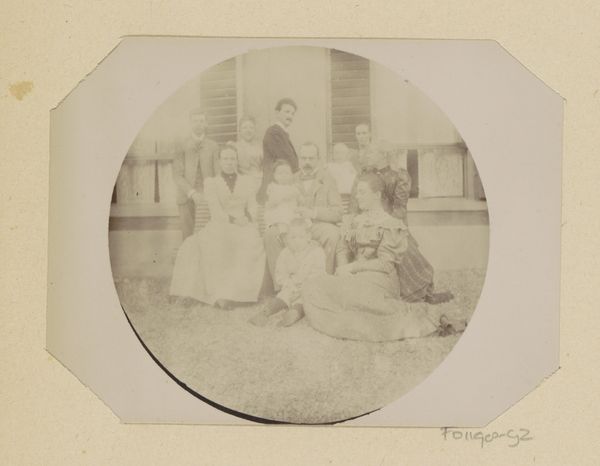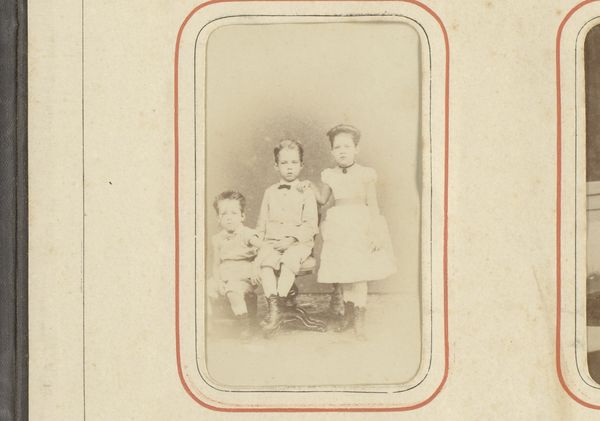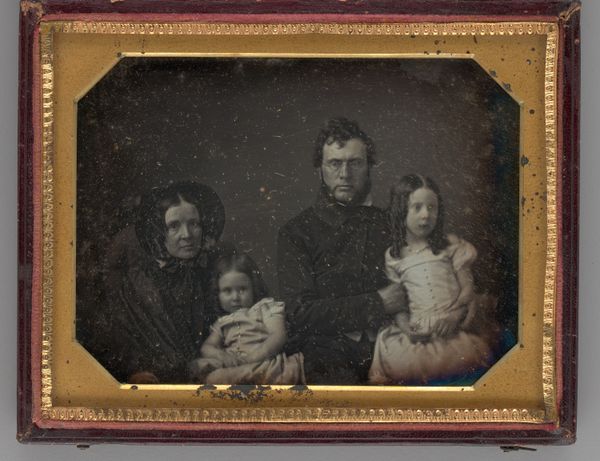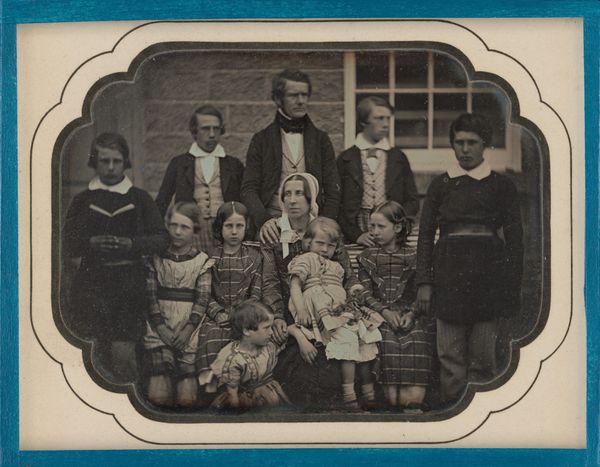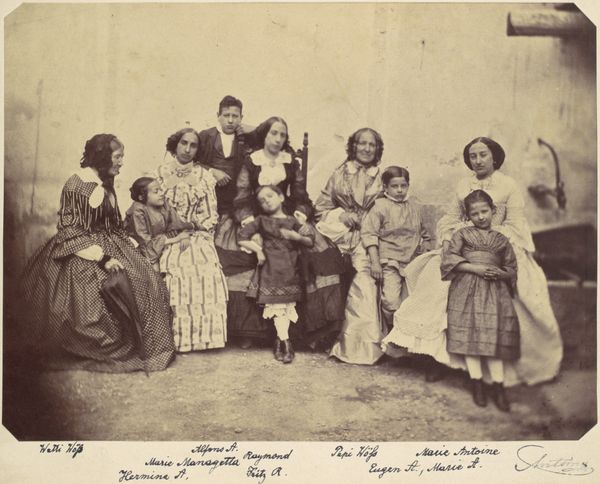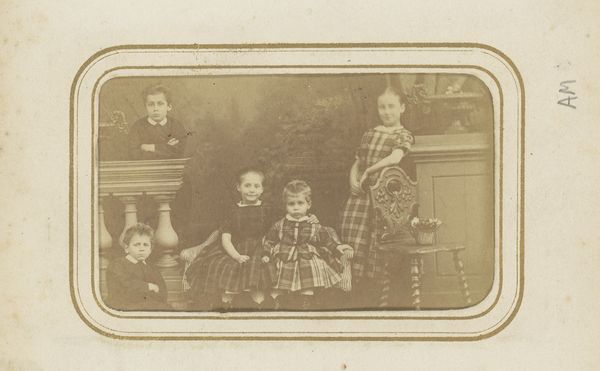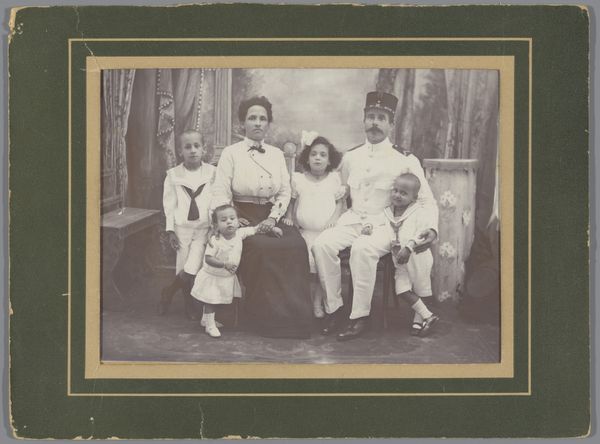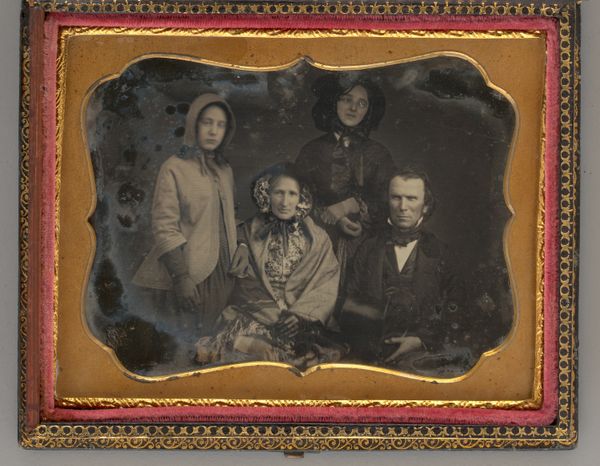
Groepsportret van leden van de familie Asser en Oppenheim c. 1847
0:00
0:00
eduardisaacasser
Rijksmuseum
daguerreotype, photography
#
portrait
#
daguerreotype
#
photography
#
group-portraits
#
romanticism
Dimensions: height 80 mm, width 71 mm, height 132 mm, width 110 mm
Copyright: Rijks Museum: Open Domain
Editor: Here we have a daguerreotype, a group portrait of the Asser and Oppenheim family, made around 1847. The rigid poses give it a slightly eerie feeling. What stands out to you about this piece? Curator: Well, I immediately see the material constraints. The daguerreotype process demanded stillness, influencing the composition we see. Notice the stiff postures, necessitated by the long exposure time. This isn’t just about aesthetic choice; it’s about the chemical and mechanical limitations of early photography shaping the image. Editor: So, the process dictates the art? Curator: Precisely. The social context also plays a key role. Early photography was an expensive undertaking, primarily accessible to the bourgeoisie. This portrait becomes an assertion of social status. We see them, materially captured. Editor: The clothing, too – everyone's dressed in similar checkered patterns. Was that a popular textile then? Curator: Possibly, or a conscious effort to project family unity. Either way, we need to consider textile production of the era, its availability and cost, as influencing what they wore. Every aspect – the clothing, the backdrop, the very act of being photographed – involves material considerations tied to production and consumption. The labour to dress in such outfits, especially on children, is of course quite different from a modern photograph, because a studio like this involved a substantial amount of pre-production. Do you see the ways in which access to labor defines it as high-art rather than, say, snapshots? Editor: That makes perfect sense! I hadn't thought about photography as involving the production processes associated with “crafts.” It reframes the image. Curator: Exactly. We have the labor of preparing the chemicals, posing the subjects, the work put in the clothing itself… it shifts how we understand photographic art in relationship to labor. It makes it more egalitarian to appreciate the work involved.
Comments
No comments
Be the first to comment and join the conversation on the ultimate creative platform.
